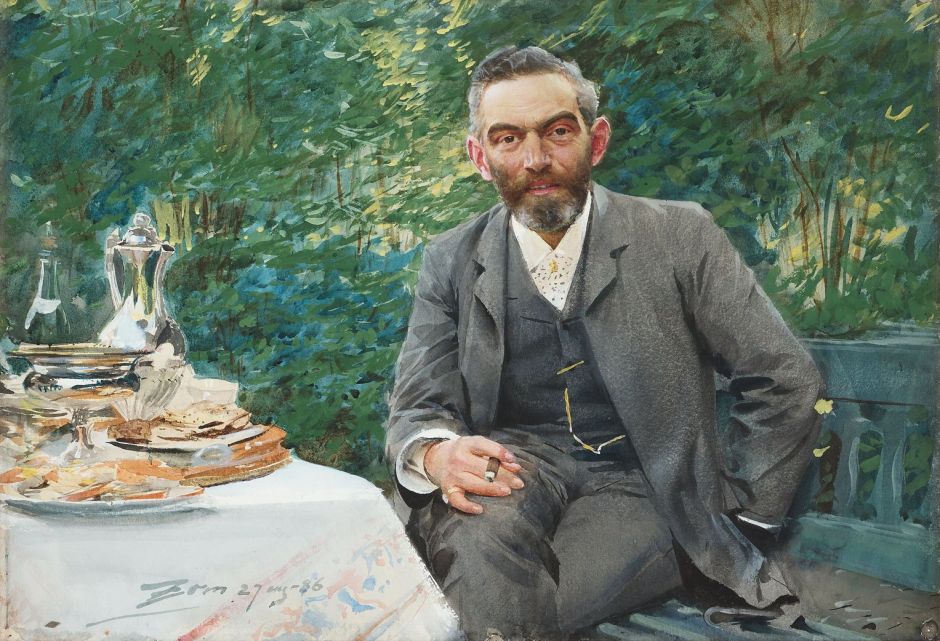The young Swedish master watercolourist Anders Zorn (1860–1920) married in the autumn of 1885, then went on an extended honeymoon in Constantinople (modern Istanbul in Turkey). Just as he was painting views of this enthralling city, he caught typhoid fever and came close to death. His convalescence took a further three months, following which the couple travelled on to Greece, Italy, France and London.

One portrait which he completed before leaving Turkey is this Bedouin Girl (1886), in Constantinople.

The following year, Zorn tackled this demanding motif on Dalarö in the Stockholm archipelago, which was to become one of his favourite seasonal locations. The couple holidayed there in a small house rented by his mother-in-law. He concentrates here on the play of light on the water, fine detail in the small waves, and his precision in committing the scene in watercolour. Emma Zorn was the model.

He used the same location for this Boat Race (1886) between two boys, in the same summer.
Zorn was honoured that year with the Royal Order of Vasa for his services to art in Sweden, the first in a succession of awards.

He also painted from his family home near Mora. Our Daily Bread (1886) shows his mother in traditional dress, sitting at the edge of a ditch as she cooks potatoes to feed the harvesters seen working hard in the distance. Although Zorn doesn’t appear to have been directly influenced by Jules Bastien-Lepage, who had died in France just two years earlier, this painting surely qualifies as being Naturalist in both theme and style. This was purchased by the Nationalmuseum in Stockholm, and I believe was the first of his works to enter a major public collection.

That year, he painted Breakfast in Green, a portrait of the merchant Adolf Magnus of Göteborg in the south-west of Sweden. This again excels in its fine details: the soft texture of the man’s jacket, his hair, and the highlights on the tableware. Away from those details, though, his style has started to become more painterly, in the gold watch chain on the subject’s waistcoat, and most of all in the lush greenery behind him.
The following year the Zorns, undeterred by his earlier brush with death, were on their travels again. This time they went to Algeria in North Africa, and returned through Spain.

This Man and Boy in Algiers (1887) demonstrates how much he could achieve with so little paint applied to the paper.

He painted this portrait of Mathilde (1887) when staying in Seville, Spain. It echoes the Bedouin Girl from Constantinople.
After the summer back in Sweden, during which he exhibited at both the Salon in Paris and the Royal Academy in London, the Zorns were off again. In the autumn/fall they travelled to Britain with the artist Alice Miller. It was there that Zorn started to paint in oils.
References
The Zorn Museum site; if you ever get a chance to visit this museum, it has a superb collection of his works, and much more.
Cederlund J, Brummer HH, Hedström P and Ganz JA (2013) Anders Zorn. Sweden’s Master Painter, Skira. ISBN 978 0 8478 4151 6.
Sandström B (2005) Anders Zorn, Nationalmuseum and NOK, Sweden. ISBN 978 9 127 11172 1. (In Swedish.)

